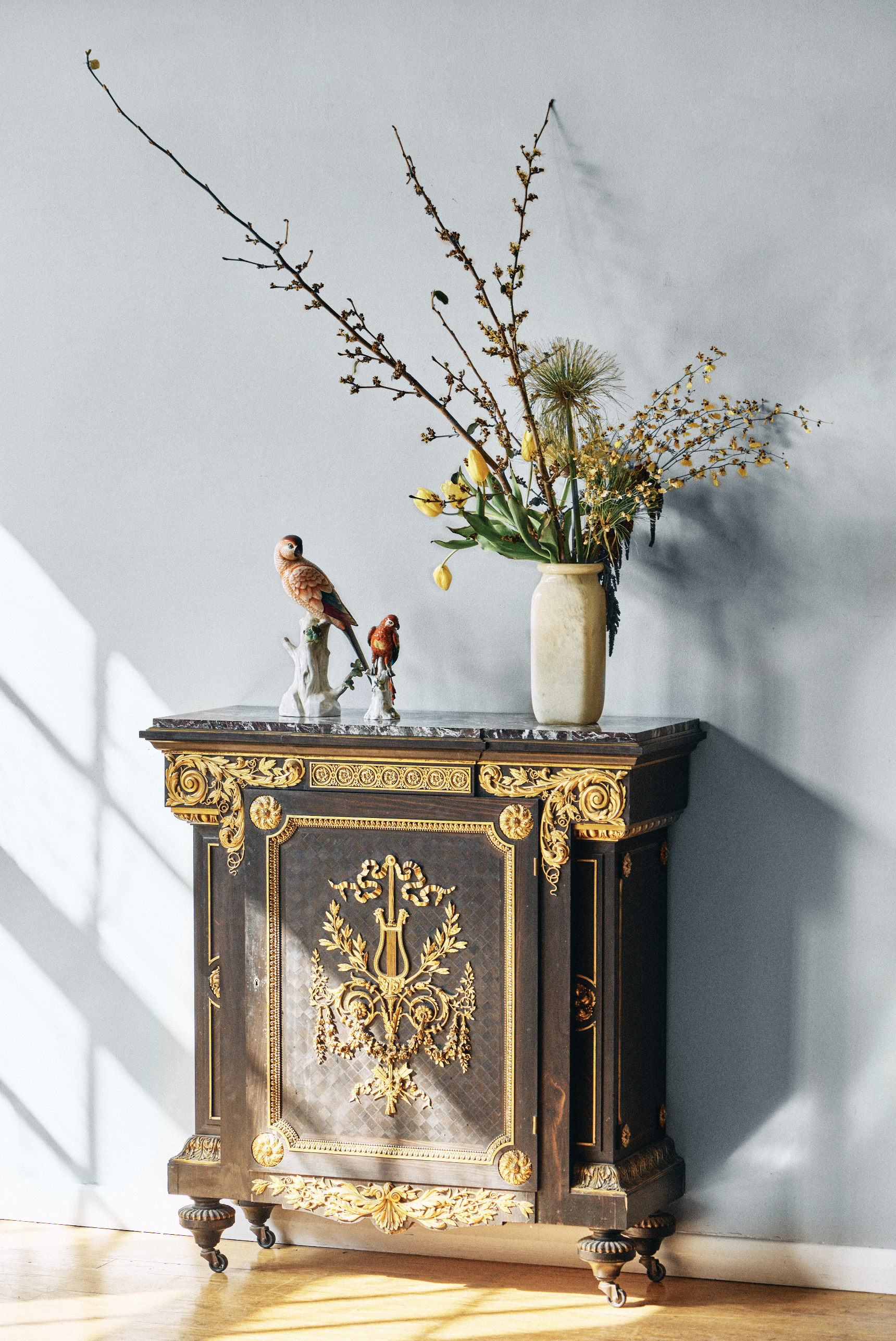 From the dawn of civilization, humanity has held a reverence for gold, associating its yellow lustre with wealth, prosperity, extravagance, and beauty. If we look through the lens of decorative arts history, we see it epitomised in the sheer abundance of gilded objects, architecture, and ornaments from around the world.
From the dawn of civilization, humanity has held a reverence for gold, associating its yellow lustre with wealth, prosperity, extravagance, and beauty. If we look through the lens of decorative arts history, we see it epitomised in the sheer abundance of gilded objects, architecture, and ornaments from around the world.
For both artists and artisans, the craft of gilding is the finishing touch to an object or surface, serving to elevate a viewer’s perception of its value. With this said, restraint is often abandoned for ostentation and exuberance, as per the Shakespearean expression ‘gilding the lily’.
This is certainly apparent in the decorative arts of 18th and 19th Century France. We can see how the utilization of the gilded bronze ornament known as ‘ormolu’ characterised the ostentatiousness and exuberance of the Rococo and Neoclassical movements. Today there is still a demand for reproductions of furniture and interiors from these classic movements, all heavily adorned with lustrous polished ormolu.
Gilding is a decorative technique that refers to the process of covering a surface with a fine layer of gold, thus giving an object the effect of solid gold at a fraction of the cost. This is done by applying gold to a surface through a variety of techniques. The ormolu process gives a metal ornament (usually bronze or alloy) the lustrous bright quality of gold whilst keeping it durable and practical.
This Napoleon III pier cabinet by Jean-Louis-Benjamin-Gros, circa 1850 (pictured) gives a superb example of ormolu mounting from the mid-19th Century. Its ormolu is characteristic of the Neoclassical style as it serves as a focal point of the furniture piece rather than showcasing its overall form as previously done in the Rococo period.
This cabinet will be offered in our May 24th Decorative Arts Auction.
A few notes on ormolu:
- Ormolu is a French term meaning ‘powdered gold’. It not only refers to the process of applying gold to metal (traditionally bronze) but the finished object, gilded bronze.
- Ormolu is mounted onto French furniture, chandeliers, porcelain, and clocks
- Ormolu can be identified by its sculptural or architectural characteristics such as motifs like figures, flora, or fauna, or columns, balustrades, frames, and supports
- Fondeur-ciseleurs (founders and finishers) were responsible for the production of ormolu while ebenistes (cabinets makers) were responsible for attaching the ormolu to their pieces
Dominic Kavanagh
March 2021
